Albireo is a double star located in the constellation of Cygnus, being the fifth brightest star in the constellation. The primary star is yellow and makes a striking contrast with its blue, yet fainter companion.
Key Facts & Summary
- Albireo is located at around 430 light-years / 133 parsecs away from the Sun.
- The star system has an apparent magnitude of 2.90 and an absolute magnitude of around -2.45.
- The primary star, Albireo Aa, is believed to be itself a triple star system.
- Albireo Aa is a bright-yellow giant star of spectral type K2II. It has an apparent magnitude of 3.18 and an absolute magnitude of -2.45.
- Albireo Aa has around 14.52 solar masses and a radius of around 69 times that of the Sun.
- Albireo Aa is cooler than our sun, at around 4.270 K average surface temperatures, but it is around 1.200 times brighter than our sun.
- Albireo Aa is a slow spinner, having a rotational velocity of around 1.4 km / 0.8 mi per second.
- The secondary star, Albireo B, is a blue-white main-sequence star of spectral type B8Ve. It has an apparent magnitude of 5.11.
- Albireo B has around 3.84 solar masses and a radius of around 2.59 times that of the Sun.
- Albireo B is much hotter than Albireo Aa, and the Sun combined. It has average surface temperatures of around 13.200 K.
- Albireo B is around 230 times brighter than our sun, and it has been estimated to be much younger, at around 100 million years.
- Albireo B is surrounded by a circumstellar disk of gas due to its mass loss rate, influenced by its fast rotational velocity of 250 km / 155 mi.
- One of the two stars orbiting around Albireo Aa, is another blue-white star, but of spectral type B8:p. It is designated Albireo Ac and has an apparent magnitude of 5.82.
- Albireo Ac is 3.84 times more massive than our Sun, and 950 times brighter. It is separated by Albireo Aa at a distance of around 40 AU.
Albireo, though not the second-brightest in its constellation, is designated as Beta Cygni. It is actually fainter than Gamma Cygni, Delta Cygni, and Epsilon Cygni.
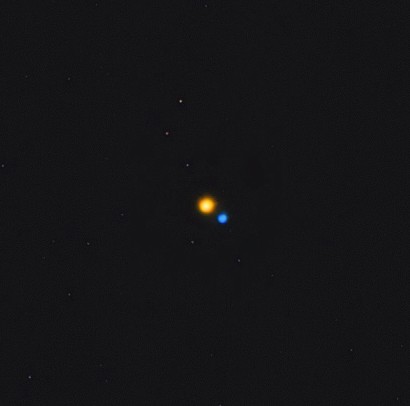
Apart from this, the star’s name comes from a misunderstanding of the words “ab ireo.” This was a description of the constellation of Cygnus in the 1515 Almagest.
The origin is believed to come from the Greek word “ornis,” which was the name of the constellation, and later became “urnis” in Arabic. It was translated into Latin due to an error, it was believed that the name referred to Erysimon, the Greek name for hedge mustard, and thus it became ireo – the Latin equivalent to hedge mustard. Thus “ab ireo” was eventually viewed as a miscopy and changed to al-bireo.
Formation
It is unknown if the star’s in the Albireo star system formed at the same time or not. Apart from the others, Albireo B has been estimated to have around 100 million years, much younger than our sun.
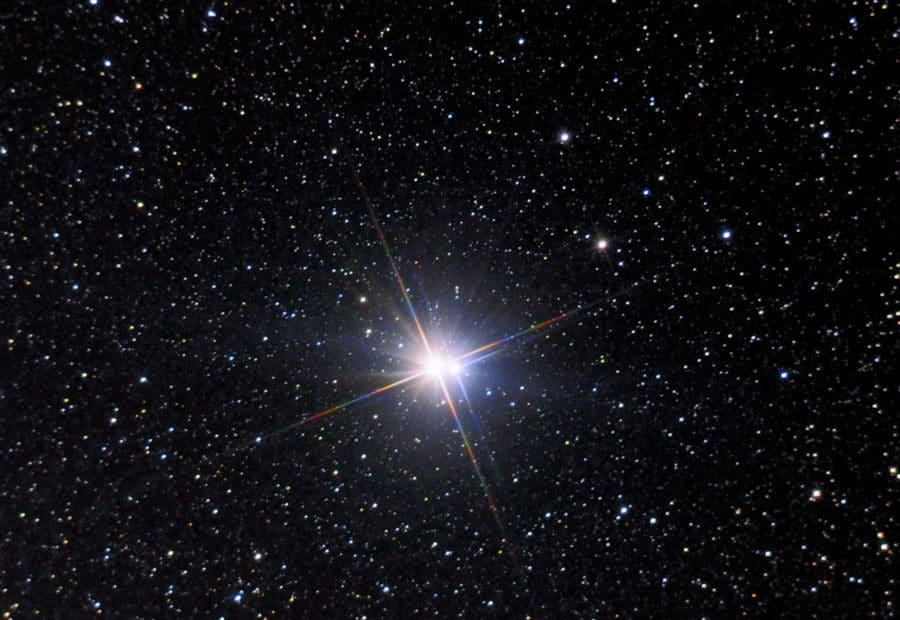
It is also unknown if Albireo B is truly gravitationally bound to Albireo Aa. The stars though, likely formed from a nebula or molecular cloud of gas and dust millions of years ago. Gravity pulled the swirling gas and dust together to form the Albireo stars.
Distance, Size, and Mass
Albireo is located at around 430 light-years / 133 parsecs away from the Sun. It is one of the closest beautifully and striking contrasted star system to Earth. The star can be seen with the naked eye, appearing as a single star though through smaller telescopes Albireo B may be distinguished.
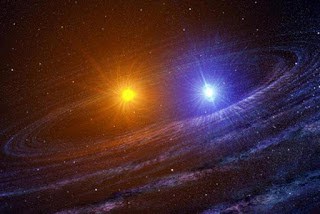
The primary star, Albireo Aa, is 14.52 solar masses, and a radius around 69 times that of the Sun. The secondary star, Albireo B, has 3.84 solar masses and a radius of around 2.59 times that of the Sun. The third star, Albireo Ac, is 3.84 times more massive than our Sun and its radius is currently unknown. The fourth star’s physical attributes are also unknown.
Other Characteristics
The primary star, Albireo Aa, has two companion stars separately from Albireo B. Albireo Aa has an apparent magnitude of 3.18 and an absolute magnitude of -2.45.
Albireo Aa is cooler than our sun, at around 4.270 K average surface temperatures, but it is around 1.200 times brighter than our sun. Albireo Aa is a slow spinner, having a rotational velocity of around 1.4 km / 0.8 mi per second.
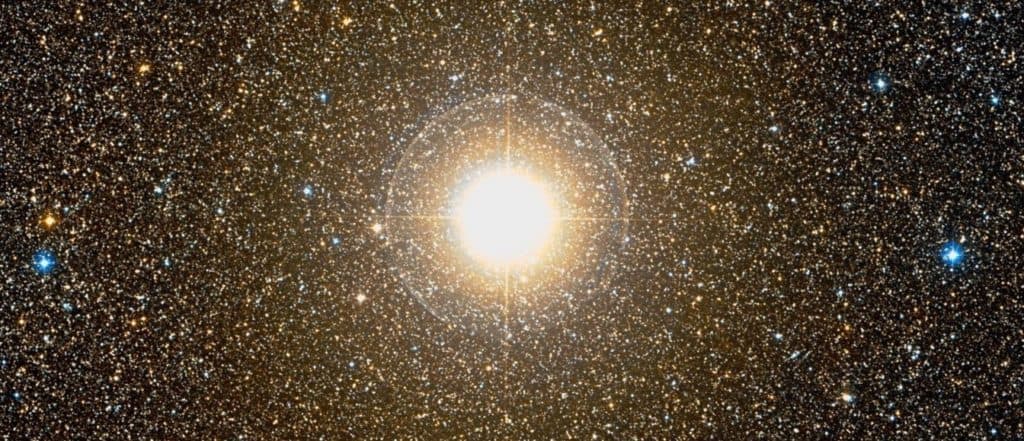
One of its companion stars is Albireo Ac, which is 3.84 times more massive than our Sun, and 950 times brighter. Albireo Ac has an apparent magnitude of 5.82 and an absolute magnitude of -0.25. The other companion’s physical characteristics are unknown.
Albireo B, on the other hand, has an apparent magnitude of 5.11 and is much hotter than Albireo Aa, and the Sun combined. It has average surface temperatures of around 13.200 K, or 2.2 times hotter than our Sun. Albireo B is around 230 times brighter than our sun and is surrounded by a circumstellar disk of gas due to the fact that it spins very fast, at an estimated 250 km / 155 mi per second, thus it loses its mass very fast.
Stellar System
Albiero Aa and B are separated by around 34.3 arcseconds. It is unknown if they are truly gravitationally bound to one another, but if they are, it would take around 75.000 years for them to complete one orbit.
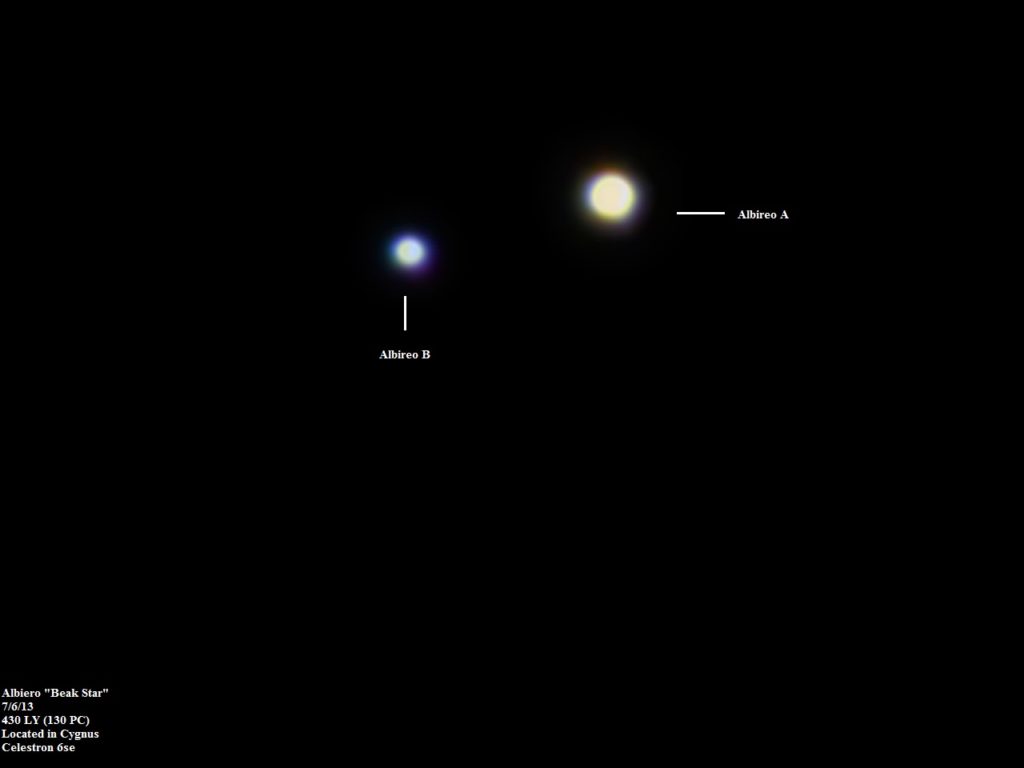
Albiero Ac is separated by Albiero Aa at around 0.4 arcseconds / 40 AU on average, while Albiero Ab was only 0.1 arcseconds away when it was discovered, and now it is currently 0.0 arcseconds, thus it is impossible to resolve the pair. Albiero Ac and Aa complete one orbit around each other once every 100 years or so.
Both Albiero Ac and Albiero B appear blue-white in color while Albiero Aa is orange / bright-yellow.
Location
Albiero is located in the constellation of Cygnus, the celestial Swan. It is the fifth brightest star in the constellation and the faintest star which forms the summer asterism known as the Northern Cross.
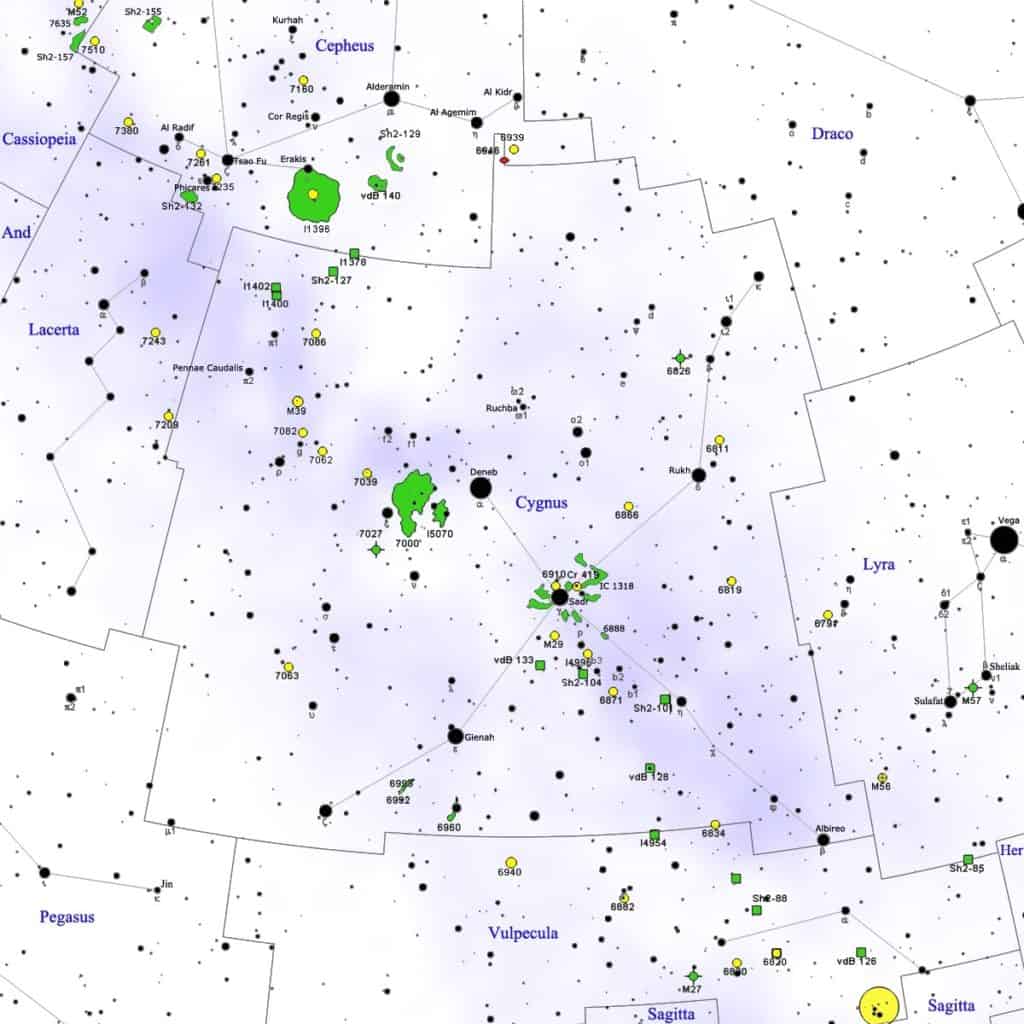
The Northern Cross is formed by Deneb – marking the top of the cross, and also the celestial tail of the Swan. Gamma Cygni, and Albiero outline the pole of the cross. Epsilon Cygni and Delta Cygni form the crossbeam.
The constellation of Cygnus is the 16th largest in the night sky. For observers in the Southern Hemisphere, it is the most visible during the month of September, while for those in the Northern Hemisphere, from June to December.
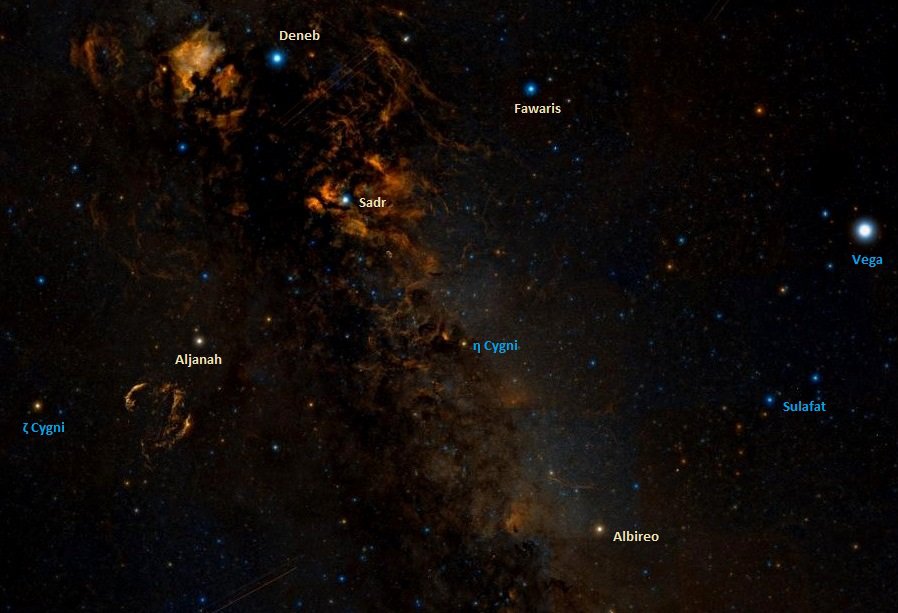
The Future
Due to the mass of Albiero Aa, it is considered a supernova candidate. It is difficult to predict when this will happen however, other studies suggest that the star will be the brightest in the night sky in the year 3.870.000. It will come within 80 light-years of the solar system. In the year 4.610.000, it will shine at magnitude -0.52, a little fainter than Canopus today.
Did you know?
- The two components of the primary star were discovered in the late 19th century after analyzing its spectrum. They were listed as HD 183912 and HD 183913 in 1923.
- Cygnus is one of the Greek constellations, which first appeared in Ptolemy’s Almagest in the 2nd century C.E.
- In medieval Arabic astronomy, Albiero was known as “the hen’s beak.” It reffered to the position of the star in the constellation as it marks the beak of the celestial swan.
- Albiero, also appeared by the name “beak star” in the Calendarium of the Egyptian astronomer Al Achsasi Al Mouakket, in the 17th century, and was later translated into Latin as Rostrum Gallinae.
Sources:
Image source:
- https://upload.wikimedia.org/wikipedia/commons/f/f5/NewAlbireo.jpg
- https://www.star-facts.com/wp-content/uploads/2019/10/Albireo-900x620.jpg?189db0&189db0
- https://3.bp.blogspot.com/-a9SjFMAhGI0/V0MaSw-QaII/AAAAAAAACS4/gnP5VLU86msHcBTsI33SfSiDzaXCHhuIgCLcB/s400/doublestar_sm.jpg
- https://www.star-facts.com/wp-content/uploads/2019/10/Beta-Cygni.jpg?189db0&189db0
- https://www.cloudynights.com/uploads/monthly_07_2013/post-218699-14074150279717.jpg
- https://www.star-facts.com/wp-content/uploads/2019/09/Cygnus-constellation.jpg?189db0&189db0
- https://www.star-facts.com/wp-content/uploads/2019/10/Northern-Cross.jpg?189db0&189db0
